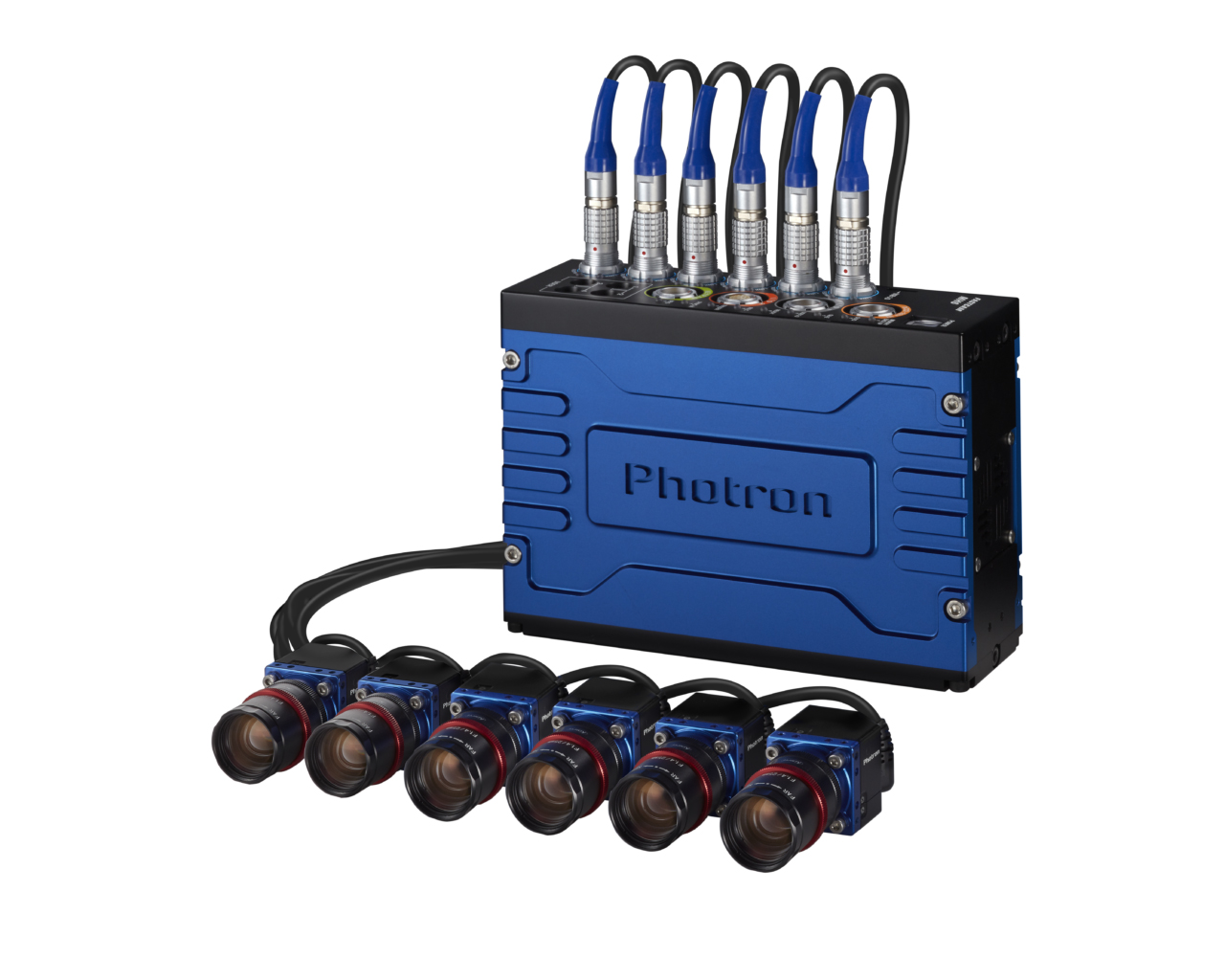Tethered Head Series
FASTCAM MH6Models MH6, MH6 ST, and MH6 LT
Specifically developed for on-board automotive safety testing and defense applications, the FASTCAM MH6 can capture high-speed images in severely space constrained locations during impact.
Need 2.5x the internal recording memory of the standard MH6? The MH6 LT is designed specifically for those applications requiring longer recording times. See the LT MH6 Overview below for more information.
2-MEGAPIXEL CMOS IMAGE SENSOR
1920 x 1400 pixels at 750fps
1920 x 1080 pixels at 1,000fps
1280 x 800 pixels at 2,000fps
1280 x 256 pixels at 5,000fps
CLASS LEADING LIGHT SENSITIVITY
ISO 12,500 Monochrome
ISO 5,000 Color

The FASTCAM MH6 system supports up to six compact HD camera heads (35.4mm x 35mm x 35.4mm, weight 100g), or 12 miniature ST camera heads (15mm x 15mm x 15mm, weight 15g). A combination of HD and ST camera heads may each be connected via a 10m cable to the main processor, facilitating a wide range of camera head viewing angles and mounting positions within the vehicle. All camera heads are extremely rugged and have been operationally tested to 160G. Each MH6 camera head, regardless of type (HD or ST), provides outstanding image quality and industry leading light sensitivity of ISO 5,000 color and 12,500 monochrome. HD camera heads capture images with 1080 full HD resolution at 1,000fps and are compatible with readily available 1-inch C-mount ruggedized lenses. ST camera heads capture images with 800 x 600 (SVGA) resolution at 1,000fps and utilize M10.5 ruggedized lenses.
The MH6 processor internally handles distribution of trigger and synchronized to each camera head and incorporates two levels of security for the captured image data – automated image transfer to built-in non-volatile memory in the event of a power failure and automated image download to an internal 512GB SSD. After the test, image transfer to a computer is possible via Gigabit Ethernet and USB.
A built-in 3-axis / 1kHz acceleration sensor is the processor can be used to trigger the system based on detected shock level and serves as a backup to the main trigger input.